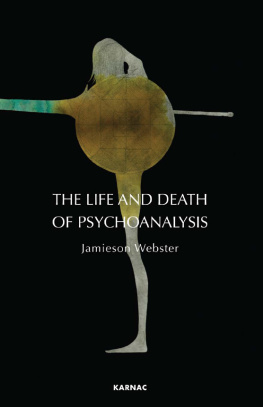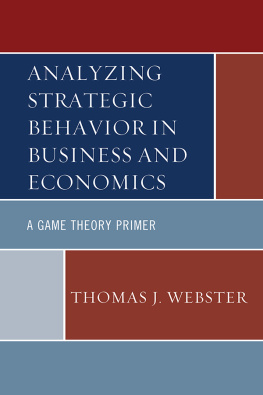

World-leading influenza researchers on Flu Hunter:
If Tolkien were a virologist, this is the sort of book he would write. An expansive, global story of adventure, discovery and unexpected encounters with microbes and their hosts. The difference is that this story is true! Robert Websters book is a vivid description of how determination, astute observation and research have given us a profoundly better understanding of influenza, one of the worlds most important infectious disease threats. Although it is one mans account, it also shows the importance of international collaboration in research. Highly recommended to anyone with an interest in infectious diseases, public health or the history of science.
MICHAEL BAKER Professor of Public Health,Department of Public Health, University of Otago, Wellington
In this very valuable book Rob Webster, mentor to influenza researchers all over the world, describes a lifetime of work on influenza viruses. It is essential reading for scientists and public health policy-makers, and a fascinatinginsight for the general public, by a man who has been at the centre of it all.
MASATO TASHIRO, Former director, WHO Collaborating Centre forReference and Research on Influenza, Tokyo
The marvellous real-life story behind some of the great virological discoveries. This autobiographical account of Robert Websters lifelong quest to understand influenza virus underlines the importance of serendipity in scientific discovery being in the right place at the right time, with an open and prepared mind. This important witness account will surely form part of the final record of how the mysteries of influenza were unravelled in the 20th and 21st centuries.
MARIA ZAMBON, Deputy Director National Infection Service,Public Health England
An engaging autobiography of an important professional career, some aspects of which I was privileged to share. Flu Hunter provides an impressive chronology of the understanding of the animal influenza viruses and theirrole in the human influenza world. A must-read for anyone working with influenza and influenza viruses.
BERNARD EASTERDAY, Professor Emeritus, Dean Emeritus,Department of Pathobiological Sciences, School of Veterinary Medicine,University of Wisconsin
Flu Hunter is an exciting story of scientific curiosity and discovery by one of the worlds leading authorities on the origin of influenza viruses. Starting with the great Spanish flu pandemic of 1918, Webster sketches the growth of modern influenza virology and his own role in the discovery of reservoirs of flu viruses in ducks and migratory seabirds. Heavily involved in the WHO response to H5N1 bird flu in Hong Kong in 1997, when the world narrowly avoided another flu pandemic, Webster brings the story right up to the present day and the worrying failure of seasonal flu vaccines in 2017.
GEOFFREY RICE, Professor Emeritus University of Canterbury, author of Black November: The 1918 influenza pandemic in New Zealand (2005) and Black Flu 1918: The story of New Zealand's worst public health disaster (2017).

Published by Otago University Press
Level 1, 398 Cumberland Street
Dunedin, New Zealand
www.otago.ac.nz/press
First published 2018
Copyright Robert G. Webster
The moral rights of the author have been asserted.
ISBN 978-1-98-853131-1 Print
ISBN 978-1-98-853142-7 Kindle Mobi
ISBN 978-1-98-853140-3 ePub
ISBN 978-1-98-853141-0 ePDF
A catalogue record for this book is available from the National Library of New Zealand. This book is copyright. Except for the purpose of fair review, no part may be stored or transmitted in any form or by any means, electronic or mechanical, including recording or storage in any information retrieval system, without permission in writing from the publishers. No reproduction may be made, whether by photocopying or by any other means, unless a licence has been obtained from the publisher.
Editors: Sue Hallas and Erika Bky
Indexer: Diane Lowther
Design/layout: Fiona Moffat
Front cover: Artwork by Sharon Webster
Back cover: Author portrait by Jason Bouldin, 2012
Ebook conversion by meBooks, Wellington, New Zealand
CONTENTS
I nfluenza is a respiratory disease that impacts on everyone. When a new influenza virus emerges that is able to be transmitted from person to person, it spreads globally, as a pandemic, usually but not always with high mortality, enormous social disruption and substantial economic cost.
A number of influenza pandemics have been documented through the ages, the most serious of course being the Spanish influenza 1918, now a century ago. Unravelling the way these pandemic viruses evolve has challenged the thinking of the most dedicated virologists from around the world since the first influenza virus was isolated in the 1930s.
I became involved in influenza research in the early 1970s, just after the 1968 Hong Kong pandemic. This was a period of transition from the classical era of virology to the molecular era. Professor Robert Webster from Dunedin, New Zealand, had been a flu researcher for a decade or so and I began closely following his research, in which classical epidemiological investigation combined with the newly evolving molecular laboratory technologies to develop the framework we now use for understanding the evolution and control of influenza viruses of human and animal origin.
His lifetime of research has been an incredible journey that started with expeditions to recover viruses from seabirds in Australia in the early 1960s. This led him to the realisation that influenza viruses circulate readily among seabirds without causing disease, and that indeed the natural ecology of most influenza viruses is among wild aquatic birds. Together with another key discovery that influenza viruses readily evolve or morph through genetic reassortment led Rob Webster and the other scientists involved to establish a link between the wild aquatic bird virus reservoirs and human influenza pandemics.
It was the Smithsonian Magazine that bestowed the moniker Flu Hunter on Rob Webster (www.smithsonianmag.com/science-nature/the-flu-hunter-107190623/), in recognition of the significance of his discoveries. His fascinating journey is documented in this book, with numerous anecdotal stories of his teams experiences during their field work, which took them all over the world, interacting with governments and other research organisations on every continent. The stories highlight Robs passion for his work and the obvious enjoyment and satisfaction that he has derived from a career that has spanned over half a century and is not over yet.
His work has involved collaboration with many world-leading influenza researchers and it is clear that his humble, natural, non-pretentious persona has been a key to these many successful collaborations. Yet he plays down his own contribution at every turn.
The 1918 Spanish influenza pandemic was undoubtedly the most devastating influenza pandemic to date, and Rob Webster has made it his lifes work to find out how and why. He has made a remarkable contribution to our understanding of the evolution of influenza viruses and how to control them.
Next page


















